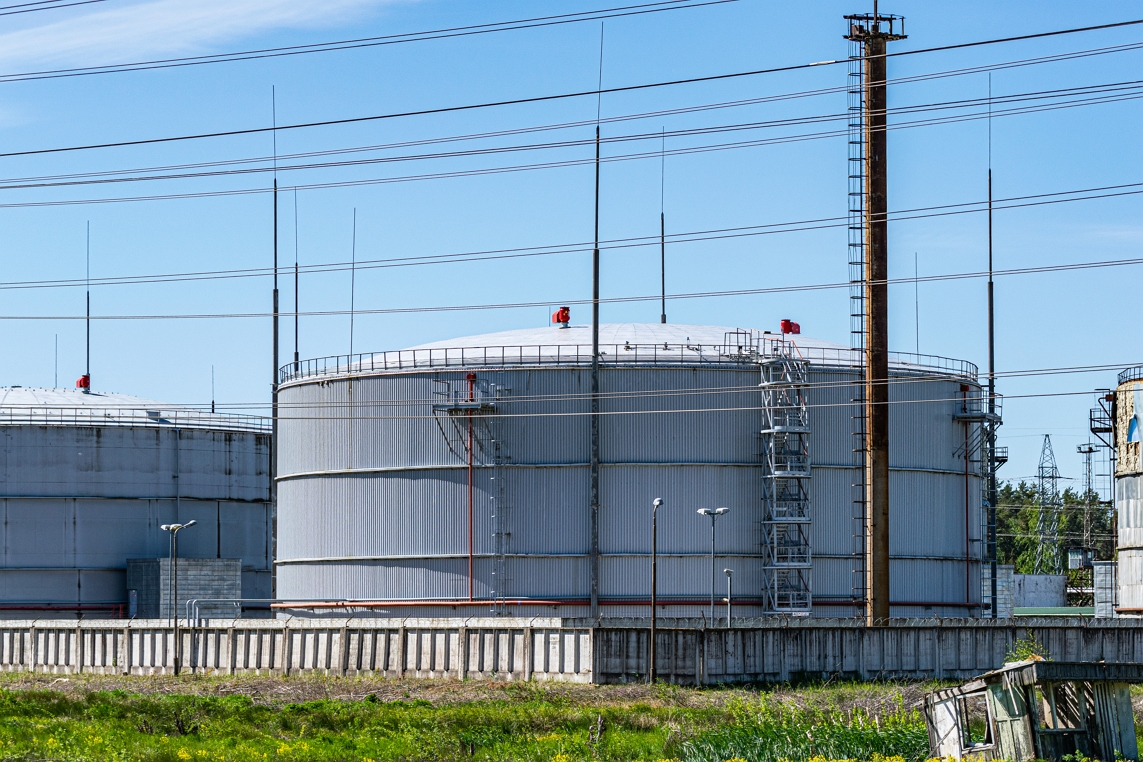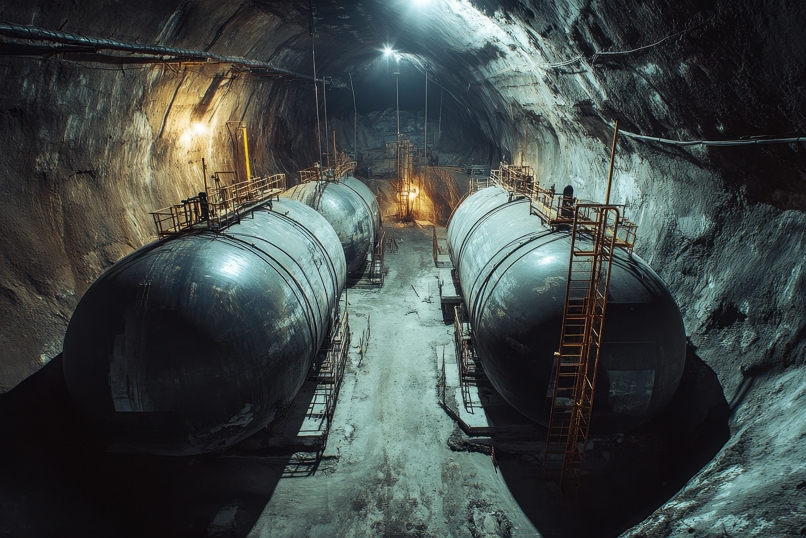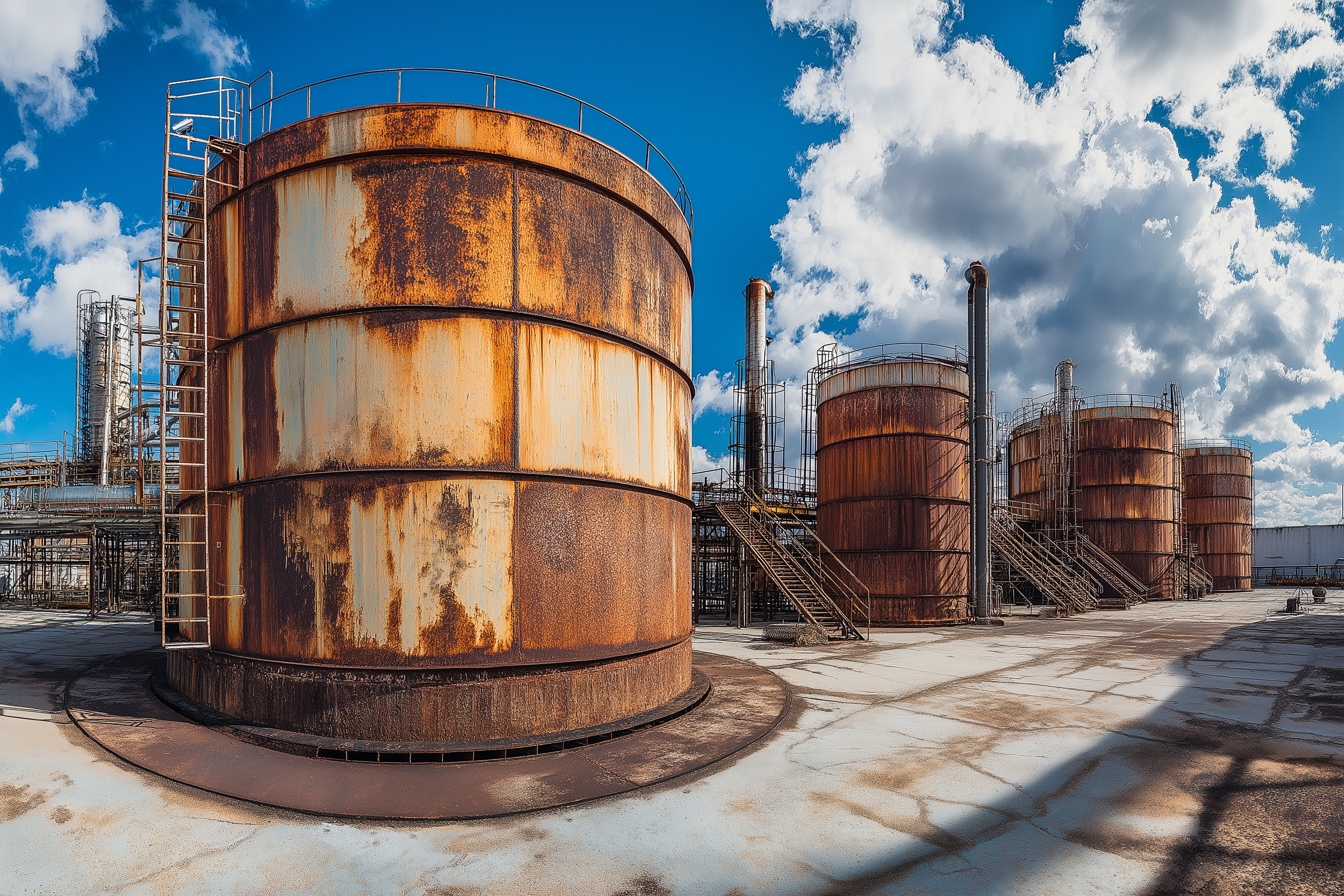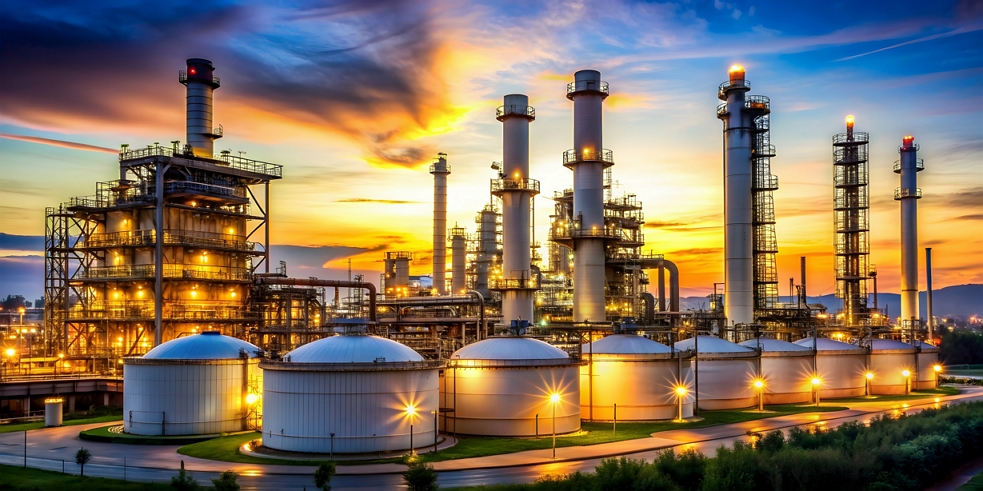Supply security is one of the most pressing concerns in the oil and gas industry today. As energy demands continue to grow and geopolitical tensions fluctuate, ensuring a steady and reliable oil and gas supply is more important than ever. With the unpredictability of production rates, seasonal demand shifts, and unexpected disruptions, having robust infrastructure in place is essential for maintaining stability in the supply chain.
One key component in ensuring this is storage infrastructure. Storage tanks and underground caverns play a crucial role in buffering supply volatility. They allow for consistent availability despite changes in consumption or external disruptions.
These storage solutions not only help to smooth out supply disruptions but also provide flexibility in managing inventory and pricing, thus contributing significantly to overall energy security.
This blog will explore how storage tanks and caverns contribute to supply security in the oil and gas industry. It will focus on their importance in safeguarding against supply interruptions, mitigating the effects of price fluctuations, and supporting long-term energy stability.
#The Need for Storage in the Oil and Gas Industry
The oil and gas industry operates in a landscape defined by significant supply and demand imbalances, which can often fluctuate dramatically. These imbalances highlight the need for reliable storage solutions to maintain a consistent supply and stabilize the market.
Supply and Demand Imbalances
Production levels can vary due to changes in extraction rates, technological advancements, or political factors. Demand can shift based on global economic growth, seasonal weather patterns, or even consumer behavior.
Storage tanks and caverns help address these imbalances by acting as buffers. This allows excess production to be stored when supply exceeds demand and makes it available when demand spikes.
Without sufficient storage capacity, any imbalance in supply or demand could lead to price volatility or supply disruptions. Proper storage ensures that these fluctuations don’t translate into disruptions in the availability of oil and gas.
Emergency Reserves
Another critical function of storage infrastructure is to provide emergency reserves. These reserves are vital for safeguarding energy security in the event of natural disasters, geopolitical conflicts, or other unforeseen circumstances.
Strategic petroleum reserves (SPR) are one example of large-scale emergency storage facilities maintained by governments or major energy producers to ensure energy availability during crises.
In times of emergencies, stored oil and gas can be released to stabilize the market, mitigate price spikes, and ensure that there is no immediate shortage of essential energy resources.
These emergency reserves act as a safeguard against supply chain vulnerabilities and are crucial in maintaining national and global energy security.
#Types of Storage Infrastructure
Storage infrastructure in the oil and gas industry comes in various forms, each suited to specific needs, environmental conditions, and capacities.
Below are some of the primary types of storage infrastructure used in the industry.
Above-Ground Storage Tanks
These are some of the most common and visible types of storage in the oil and gas industry.
These large, cylindrical tanks are typically used to store crude oil, refined products, or natural gas liquids (NGLs).
They are found at refineries, terminals, and distribution hubs.
They are generally constructed from steel or reinforced concrete and can vary in size depending on the storage needs.

Underground Storage Tanks (USTs)
They are used to store liquid hydrocarbons such as gasoline, diesel, or chemicals.
They are often in urban or congested areas where above-ground space is limited.
These tanks are typically made from durable materials like steel or fiberglass to ensure the integrity of the stored substances.

Salt Caverns
These are some of the most specialized forms of underground storage used in the oil and gas industry.
These caverns are created by dissolving salt deposits in the ground, creating large voids.
They can store vast amounts of hydrocarbons, making them ideal for strategic reserves and large-scale storage.
Depleted Reservoirs
This refers to underground oil or gas fields that are no longer productive but can still be used for storage.
After the natural resources in a reservoir have been extracted, the empty space is repurposed to store hydrocarbons. (typically for natural gas, crude oil, or even liquefied natural gas).
Large reservoirs can accommodate significant volumes of oil or gas, especially in regions with ample extraction history.
Floating Storage Units (FSUs)
These are offshore vessels, such as tankers or specially designed ships, that are used to store large quantities of crude oil or LNG at sea.
FSUs are commonly deployed when there are temporary surpluses in production or during offshore operations where land-based storage is not available.
.jpeg)
#How Storage Tanks and Caverns Ensure Supply Security
These infrastructures help manage supply and demand fluctuations and mitigate potential disruptions by providing safe and reliable storage spaces for hydrocarbons.
Here's how they contribute to ensuring supply security:
Buffer Against Supply and Demand Fluctuations: They act as a buffer during times when supply exceeds demand or when demand spikes unexpectedly.
Strategic Reserves for Emergencies: They are vital in maintaining emergency reserves, which are crucial in safeguarding national and global energy security.
Reducing Vulnerability to Supply Disruptions: The ability to store products in secure, strategically located facilities helps reduce the industry's vulnerability to unforeseen disruptions.
Supporting Market Stability: Storage infrastructure helps prevent market volatility by allowing producers to adjust inventory levels in response to fluctuating global prices.
#Innovations in Storage Technology
As the global demand for oil and gas rises, the industry has been investing in cutting-edge technologies and innovative approaches to improve storage infrastructure.
The oil and gas industry is witnessing remarkable innovations in storage technology that enhance supply security, efficiency, and environmental sustainability.
From advanced materials and smart monitoring systems to floating storage units and carbon capture storage, these technologies are enabling energy producers to better manage inventory. Also, to minimise risks and respond to global energy demands.
As the industry continues to evolve, these innovations will play an increasingly vital role in ensuring reliable and secure access to energy while addressing environmental and operational challenges.
#Challenges in Storage Infrastructure
While storage infrastructure is critical to the oil and gas industry, several challenges can affect its efficiency, safety, and sustainability.
Below, we will explore the key challenges faced by storage infrastructure in the oil and gas sector.
Environmental and Safety Concerns
The nature of the materials being stored is often volatile or hazardous; storage facilities must meet stringent safety standards to prevent accidents that could harm the environment, workers, and surrounding communities.
Leaks and Spills: A major risk is the possibility of leaks or spills from storage tanks or caverns. Even small leaks can contaminate the soil, water, and air, causing long-term environmental damage.
Air and Water Pollution: Emissions from storage tanks and caverns, such as volatile organic compounds, can contribute to air pollution.
Fire and Explosion Risks: Oil and gas are highly flammable, and improper handling of stored products can result in catastrophic fires or explosions.
Maintenance and Aging Infrastructure
As oil and gas storage infrastructure ages, maintaining its integrity and ensuring continued safe operation becomes a significant challenge. Some of them are:
Corrosion: Over time, corrosion can compromise the structural integrity of storage tanks, particularly those exposed to the elements or corrosive materials.
Technology Obsolescence: Many storage facilities rely on older technologies that may no longer meet the latest safety standards or operational requirements.
Increased Maintenance Costs: Older tanks require more frequent inspections and replacement of deteriorating parts, which can be time-consuming and expensive.

Economic Considerations
As the demand for energy storage grows, the economic challenges associated with these infrastructures must be considered.
High Initial Costs: The construction of large-scale storage facilities require substantial upfront investment in land acquisition, construction materials, specialised equipment, and labor.
Operational and Maintenance Costs: Beyond construction, operating and maintaining storage facilities incurs ongoing costs, including staffing, insurance, safety compliance, and energy expenses.
Fluctuating Market Demand: Oil and gas prices can be highly volatile, and supply and demand changes can impact storage facilities' profitability.
Cost of Compliance: As environmental regulations become more stringent, companies must invest in technologies that ensure their storage infrastructure meets the required safety and environmental standards.
#Case Studies and Real-World Examples
Below are several case studies and real-world examples illustrating how storage plays a crucial role in the oil and gas industry.
1. Strategic Petroleum Reserve (SPR) in the U.S.: A Cornerstone of Energy Security
The Strategic Petroleum Reserve (SPR) in the United States is one of the most significant and well-known examples of energy storage infrastructure. It is a large-scale, government-managed emergency oil stockpile, that is designed to safeguard against supply disruptions and maintain energy security in the event of an emergency.
The SPR has been tapped on several occasions to alleviate supply shortages. One notable example occurred during Operation Desert Storm in 1991 when the U.S. released 17 million barrels of oil from the SPR to stabilize the global oil market after the Gulf War caused production disruptions.
2. Successful Use of Salt Caverns in Europe for Natural Gas Storage
Salt caverns have become increasingly important in Europe for storing natural gas, particularly for seasonal storage. These caverns are used to balance supply and demand, store gas during periods of low demand (e.g., summer), and withdraw it during peak demand seasons (e.g., winter).
Real-World Example:
In the winter of 2020-2021, several European countries, including the Netherlands and Germany, relied heavily on their salt cavern storage to meet higher-than-usual natural gas demand during a colder-than-expected winter. These caverns provided the necessary buffer to maintain supply despite limited gas imports from Russia due to geopolitical tensions.
3. Role of Floating Storage During the COVID-19 Oil Demand Crash
The COVID-19 pandemic in 2020 led to an unprecedented crash in oil demand as global economic activity slowed and travel restrictions were imposed. This created a surplus of crude oil that could not be stored on land, prompting the widespread use of floating storage units (FSUs) to manage the excess supply.
Real-World Example:
In April 2020, oil producers scrambled to find storage for their unsold barrels as oil prices fell below zero for the first time in history. It was estimated that around 160 million barrels of oil were stored on tankers, representing a significant portion of the global surplus. The global fleet of FSUs swelled during this time as oil traders and producers sought offshore storage options to avoid shutting in production or selling at a loss.
#Future Trends in Storage
Technological advancements, sustainability concerns, and the transition to a more diversified energy mix will shape the future of storage in the oil and gas industry.
Integrating renewable energy storage, enhanced digitalization, carbon capture and storage, and floating offshore solutions will help the industry meet growing global energy demands while minimizing environmental impacts.
As the energy landscape changes, storage infrastructure will continue to evolve to ensure energy security, flexibility, and resilience in the face of shifting market conditions and environmental challenges.
By embracing new technologies and sustainable practices, the oil and gas industry can maintain its vital role in the global energy system while contributing to a more sustainable and secure future.




